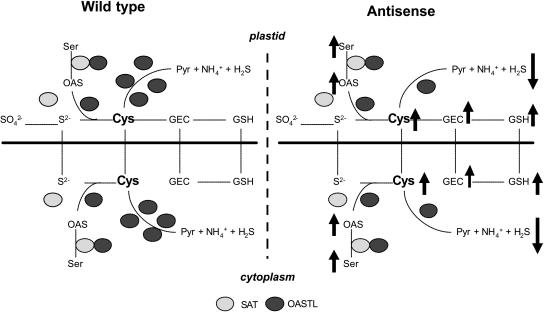Figure 6.
Comparative model of Cys biosynthesis control in potato wild-type and transgenic plants. In wild-type plants, Cys homeostasis is controlled by the formation of the SAT/OASTL complex and the excess of free OASTL protein being able to catalyze the reverse reaction. In transgenic potato, however, the catabolic activity is reduced resulting in increased thiol levels independent from the down-regulated OASTL isoform. Precursor levels of Cys synthesis such as Ser and OAS increase in their amounts, too. Furthermore, OASTL isoforms are able to substitute each other by exchange of metabolites via the chloroplast membrane. Thus, in potato, the relative enzymatic excess of OASTL over SAT controls the Cys status. Pyr, Pyruvate; S2−, sulfide; SO42−, sulfate; SO32−, sulfite; Ser, serine. Arrows indicate the increase and decrease, respectively, of metabolites.

